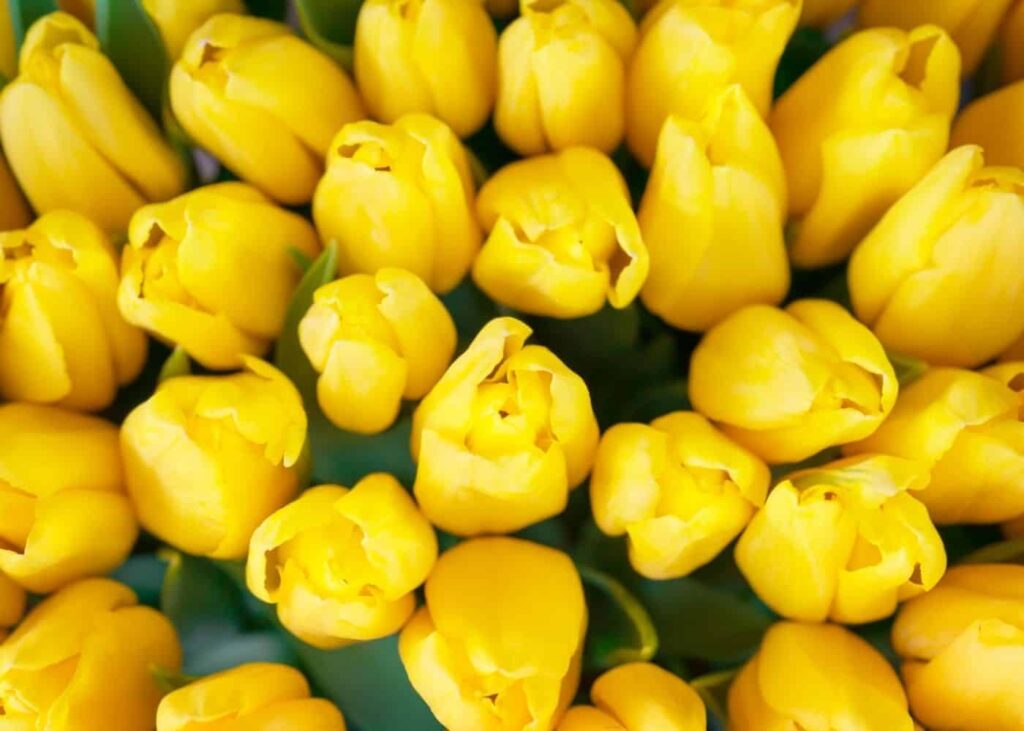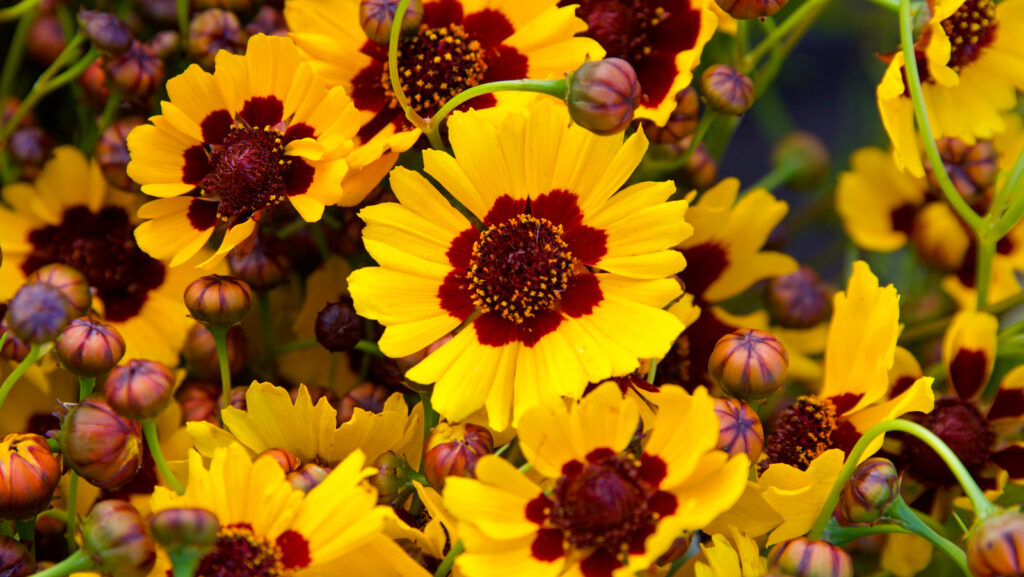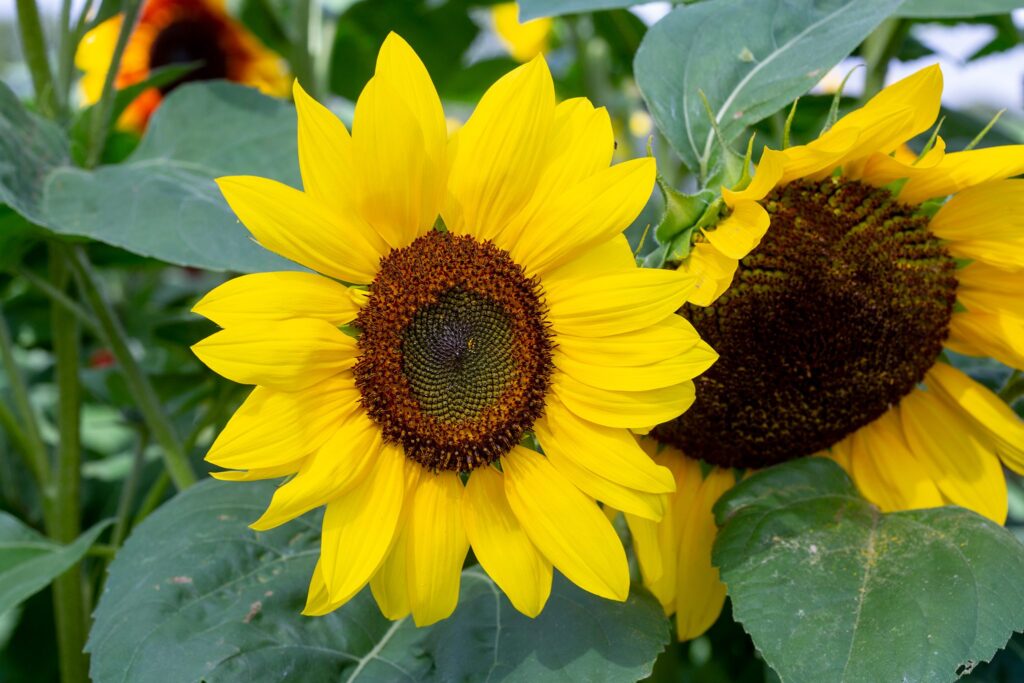Yellow flowers are a popular choice among garden enthusiasts, as they add a bright and cheerful touch to any landscape. Their vibrant color can bring life and energy to gardens, making them particularly attractive to many people. In this article, we will explore the appeal of yellow flowers, discuss some popular cultivars, and provide essential care tips to help you maintain their beauty.
Understanding the Appeal of Yellow Flowers
Yellow flowers have always held a special place in the hearts of gardeners and nature lovers. This cheerful color is often associated with happiness, joy, and positivity. It can instantly brighten up any space and create a warm and inviting atmosphere. Whether planted in flower beds, containers, or as part of a floral arrangement, yellow flowers never fail to catch the eye and evoke feelings of delight.
Imagine walking through a garden filled with vibrant yellow blooms. The sight of these sunny flowers can instantly uplift your mood and bring a smile to your face. Their radiant color seems to radiate warmth, filling the air with a sense of joy and optimism. It’s no wonder that yellow flowers are a favorite among many garden enthusiasts.
The Symbolism of Yellow Flowers
In addition to their visual appeal, yellow flowers carry symbolic meanings. They are often associated with friendship, warmth, and new beginnings, making them a popular choice for gifts and celebrations. When you give someone a bouquet of yellow flowers, you are not only offering a beautiful gift but also conveying a heartfelt message of friendship and positivity.
Yellow flowers can also be a symbol of hope and optimism. In times of difficulty or sadness, receiving a bouquet of yellow blooms can provide a much-needed boost of encouragement. The bright and sunny color reminds us that there is always a reason to stay positive and look forward to better days. Learn more how to make yellow flowers stand out in your arrangements.

The Impact of Yellow Flowers on Garden Design
When it comes to garden design, yellow flowers play a significant role in creating balance and visual interest. Their brilliant color can bring depth to a garden, especially when paired with complementary colors like purple or blue. Picture a garden bed filled with a mix of yellow daffodils, purple irises, and blue forget-me-nots. The combination of these vibrant hues creates a stunning display that is sure to captivate anyone who sees it.
Yellow flowers also work exceptionally well as focal points in garden design. Their bright color naturally draws attention and becomes a focal point, guiding the viewer’s gaze and creating a sense of intrigue. Whether it’s a single yellow rose in a sea of green foliage or a cluster of yellow sunflowers towering above the rest of the garden, these flowers demand attention and add a touch of drama to the landscape.
By strategically placing yellow blooms throughout your garden, you can create a harmonious and captivating landscape. Imagine a winding pathway lined with yellow marigolds, leading you through a garden filled with an array of colors and scents. The sight of these yellow flowers along the path creates a sense of anticipation and discovery, making the journey through the garden even more enjoyable.
So, the next time you find yourself admiring a bouquet of yellow flowers or strolling through a garden adorned with these sunny blooms, take a moment to appreciate their beauty and the positive emotions they evoke. Yellow flowers truly have a special appeal that can brighten up our lives and remind us of the joy and optimism that nature has to offer.
Exploring Popular Yellow Flower Cultivars
Now that we understand the beauty and symbolism of yellow flowers, let’s delve into some popular cultivars that will surely brighten up your garden.
The Radiant Sunflower
Sunflowers are a beloved choice among gardeners due to their impressive size and striking appearance. With their golden yellow petals and dark centers, sunflowers can add a touch of drama and awe to any garden. They are known for their ability to attract pollinators, making them not only beautiful but also beneficial for the ecosystem.
Imagine waking up in the morning and stepping into your garden, only to be greeted by a field of sunflowers stretching towards the sky. Their tall stalks, reaching heights of up to 12 feet, create a stunning backdrop against the blue sky. As the sun rises, the vibrant yellow petals begin to open, revealing their intricate patterns and textures. Bees and butterflies dance from flower to flower, collecting nectar and spreading pollen, ensuring the continuation of life.
But sunflowers are not just a feast for the eyes, they also offer a feast for the birds. Once the flowers have bloomed and the petals have fallen, the sunflower heads transform into a bountiful buffet for our feathered friends. Finches, sparrows, and other seed-loving birds flock to the garden, their cheerful chirping filling the air as they feast on the nutritious seeds.
The Cheerful Marigold
Marigolds are a delightful addition to any garden with their vibrant yellow and orange hues. These hardy flowers bloom abundantly and are known for their pest-repelling properties. Marigolds are a favorite choice for borders, containers, and companion planting, adding a splash of color while also keeping unwanted insects at bay.
Picture a garden pathway lined with marigolds, their bright yellow and orange blossoms guiding your steps. As you walk, the distinct aroma of marigolds fills the air, acting as a natural deterrent for pests. These flowers release a scent that repels insects, making them a valuable companion for other plants in your garden. By planting marigolds alongside your vegetables or herbs, you can reduce the need for chemical pesticides and create a harmonious ecosystem.
Marigolds are not just practical, they also have a rich cultural history. In many cultures, marigolds are associated with celebrations and festivities. They are often used in religious ceremonies, weddings, and Day of the Dead celebrations. Their vibrant colors and cheerful appearance symbolize joy, abundance, and good fortune.

The Delicate Yellow Rose
Roses are the epitome of beauty and elegance, and yellow roses are no exception. With their velvety petals and intoxicating fragrance, yellow roses symbolize friendship and joy. They can be the centerpiece of any garden, exuding grace and charm. Yellow roses also make stunning cut flowers, allowing you to bring their beauty indoors.
Imagine a garden filled with yellow roses, their delicate petals gently swaying in the breeze. As you approach, the sweet scent of roses fills the air, enveloping you in a sense of tranquility. Each bloom is a work of art, with layers of soft yellow petals gracefully unfolding, revealing their intricate beauty. Bees and butterflies are drawn to their nectar-rich centers, their presence adding to the enchantment of the garden.
Yellow roses have a long history of symbolism and meaning. They are often associated with friendship and are a popular gift to express joy, warmth, and appreciation. In Victorian times, yellow roses were also seen as a symbol of jealousy, but today they are mostly seen as a symbol of happiness and positivity. Whether you give them as a gift or enjoy them in your own garden, yellow roses are sure to bring a smile to anyone’s face.
The Bright Daffodil
Daffodils are heralds of spring, bringing hope and cheer after the long winter months. These trumpet-shaped flowers, with their vibrant shades of yellow, add a burst of color to gardens and landscapes. Daffodils are easy to grow and provide a stunning display of blossoms, making them a favorite among both experienced and novice gardeners.
Picture a garden awakening from its winter slumber, as daffodils emerge from the ground, their bright yellow blooms announcing the arrival of spring. The sight of these cheerful flowers instantly lifts your spirits, reminding you that warmer days are ahead. Daffodils come in various shapes and sizes, from large, showy blooms to delicate clusters of miniature flowers. Their trumpet-shaped petals, often in shades of yellow, white, or orange, create a captivating display that is hard to resist.
Not only are daffodils a sight to behold, but they are also incredibly easy to grow. These resilient flowers can thrive in a wide range of climates and soil conditions, making them a perfect choice for both experienced and novice gardeners. Plant them in clusters or scatter them throughout your garden, and watch as they multiply year after year, creating a breathtaking carpet of yellow.
As you stroll through your garden, surrounded by the vibrant colors of daffodils, you can’t help but feel a sense of renewal and optimism. The arrival of these bright blooms is a reminder that nature has a way of rejuvenating itself, bringing beauty and joy to our lives.

Essential Care Tips for Yellow Flowers
While yellow flowers are undoubtedly eye-catching, they require proper care to thrive and maintain their vibrancy. Here are some essential care tips to ensure the health and longevity of your yellow blooms.
Watering Needs of Yellow Flowers
Watering is crucial for the well-being of any plant, and yellow flowers are no exception. Most yellow flowers prefer a consistent moisture level, so aim to water them regularly. However, be cautious not to overwater, as excessive moisture can lead to root rot and other fungal diseases. It is better to water deeply and infrequently than to water lightly and often.
Ideal Soil Conditions for Yellow Flowers
Yellow flowers thrive in well-draining soil that is rich in organic matter. Amend the soil with compost or well-rotted manure before planting to improve its fertility and drainage. Additionally, it is beneficial to perform a soil test to determine the pH level of your soil. Most yellow flowers prefer slightly acidic to neutral soil conditions.
Sunlight Requirements for Yellow Flowers
Yellow flowers generally need plenty of sunlight to bloom and maintain their vibrant color. They typically require at least 6 hours of direct sunlight per day. Ensure that you choose a suitable location for your yellow flowers, where they can receive adequate sunlight. If you have limited sun exposure in your garden, consider planting shade-tolerant yellow varieties.
Pruning and Maintenance of Yellow Flowers
Regular pruning and maintenance are essential to keep your yellow flowers healthy and promote continuous blooming. Remove dead or faded flowers to encourage new growth and prevent the plant from expending energy on seed production. Additionally, monitor the plants for any signs of pests or diseases and take prompt action to prevent further damage.
Dealing with Common Pests and Diseases
Despite your best efforts, yellow flowers may occasionally be subjected to pesky pests or diseases. Here are some common issues you may encounter and how to address them.
Identifying Common Pests
Aphids, spider mites, and snails are among the common pests that can affect yellow flowers. These insects feed on the plant sap, causing wilting, yellowing leaves, and stunted growth. Regularly inspect your plants for signs of pest infestation, such as small insects, sticky residue, or distorted foliage.
Treating Common Diseases
Yellow flowers can be vulnerable to diseases such as powdery mildew or root rot. These fungal infections can lead to leaf discoloration, wilting, and reduced blooming. To prevent and treat diseases, ensure proper air circulation around the plants, avoid overwatering, and promptly remove any infected plant material.
In conclusion, yellow flowers are not only visually appealing but also symbolize happiness, friendship, and new beginnings. By choosing popular yellow flower cultivars and providing them with proper care, you can create a stunning garden that will be the envy of all. Remember to water diligently, improve soil conditions, ensure adequate sunlight, and stay vigilant against pests and diseases. With these tips in mind, you are ready to embark on a yellow flower adventure that will add beauty and joy to your outdoor oasis.
